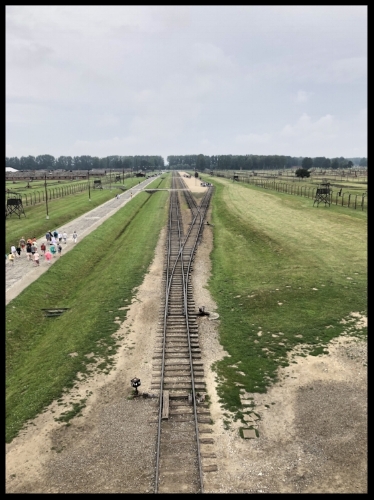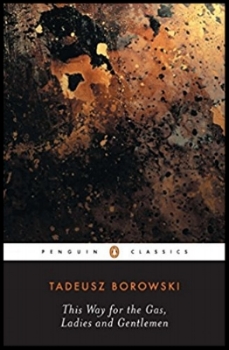Overview:
Books are a fantastic resource at our disposal; they’re cheap, portable, and filled with knowledge. However, as with all things, books have their limitations. They are written by other people and are a secondary source of information.
Some people are non-believers until they see things with their own eyes. Some things are so hard to imagine, that the reader feels the author is writing about a non-existent place until they finally visit it themselves.
Entrance into Auschwitz I. The sign translates to "Work Will Set You Free" a common lie told by many concentration camps.
That is partly how I felt before I visited Auschwitz. I’ve seen videos of the camps and read books such as “Man’s Search for Meaning” and “This Way for the Gas, Ladies and Gentlemen” but it isn’t until I actually visited this horrible place that I began to truly grasp, or at least attempt to understand, the horrors that occurred there.
It’s well known that millions of people were murdered at Auschwitz, but it’s difficult to comprehend that massive number. That is until one walks the hall were thousands upon thousands of shoes lay piled up to the ceiling. Shoes of men, women, and sadly children as well.
But more than that, their personal belongings are still there too. There are thousands of cups that people brought because they were told they would be living in the camps. Thousands of suitcases because people believed they were going to need a decent set of clothes.
They didn’t. Most people had all their belongings taken from them, including their lives.
Thousands of cups and bowls brought by prisoners to Auschwitz.
One of the most shocking realizations from visiting the camp is the sheer size of the camp. Auschwitz consisted of three camps: Auschwitz I, Auschwitz II-Birkenau and Auschwitz III-Monowitz.
Auschwitz II-Birkenau was the largest of the three and could hold 100,000 prisoners. The camps are filled with barracks that had multiple three-level bunk beds crammed inside. There was little to none ventilation and no bathrooms in the barrack. The barracks were often filled with rats, flies, lice and other unwelcoming creatures.
Prisoner barracks at Auschwitz. There were about 8 people on each level of the bunk bed.
Birkenau is also where the infamous railroad tracks and Gate of Death are found.
"The Gate of Death."
Once people arrived inside the camp, they were told to separate their belongings, and form into a line. An S.S. guard would make a split-second decision of who was healthy enough to work and who wasn’t.
Roughly 80% of newly arrived prisoners were told to get into a line that would go and take a shower. This line consisted of women, children, old adults and handicapped individuals. They marched into a shower room with fake shower heads where gas was released instead of water.
Railroad tracks leading to the center of Auschwitz II.
Visiting the camp in-person helps “put a face to a name” so to speak. You see the setting used for so many books. You see just how cramped the barracks were, the massive size of the camp and the barbed-wire fences that mean it nearly impossible to escape.
Books, on the other hand, provides in-depth stories of the people that lived and suffered. It’s like having a story in your head and then when you visit the camp, you know the setting of each scene.
When Borowski wrote in his book which directions elderly women and handicapped men walked towards the gas chambers, I knew which direction they went. When he wrote about the building where women were experimented on by Nazi scientists, I knew which building it was.
I don't claim to fully understand the life of an Auschwitz prisoner and I never will. But if people can make sense of even a small piece of the horrors that took place here and what was done to prisoners, that should be enough to teach a lesson that will not soon be forgotten.
"Those who do not remember the past are condemned to repeat it."-George Santayana
To learn more about life in concentration camps, what it took to survive, and lessons learned from survivors, I recommend reading these books:
“This Way for the Gas, Ladies and Gentlemen” & "Man’s Search for Meaning"
If you enjoyed this article, consider supporting our site or signing up for our monthly newsletter. Thank you!
Reader freebies:








